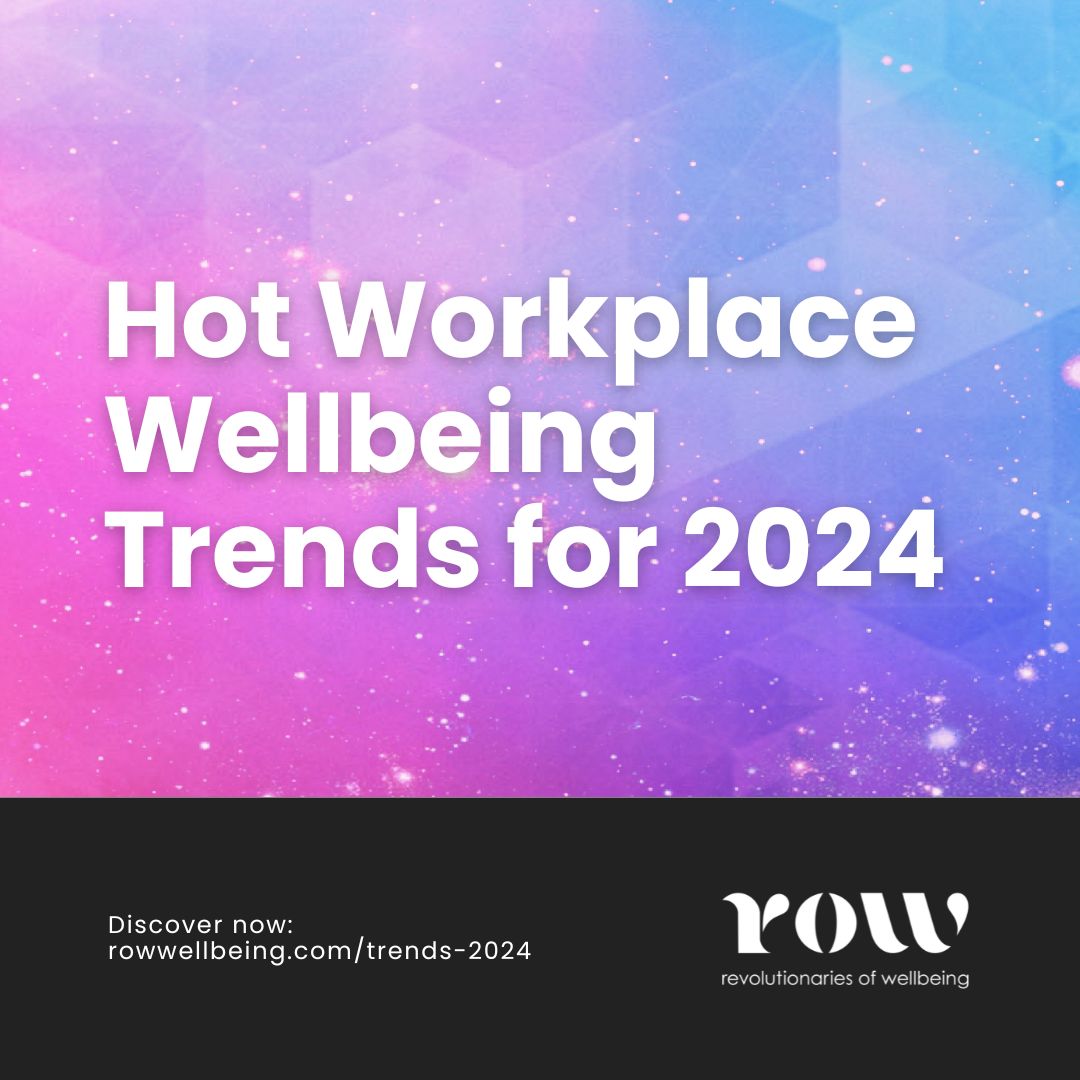
1. Wellbeing professionals will have to fight harder to maintain wellbeing as a priority on the executive agenda
In the face of the current challenging economic terrain, marked by rising cost pressures and heightened workloads, workplace wellbeing risks losing its place on the executive agenda.
While the recent pandemic sparked increased support for wellbeing, we’re noticing in the post-pandemic era there is a concerning shift back to wellbeing being perceived as a mere ‘nice-to-have’ rather than a fundamental driver of human potential and performance. In our experience, this shift often leads to reduced investment in crucial wellbeing programs and resources.
The pandemic also created a surge in demand for professionals skilled in wellbeing. For instance, health and safety manager roles evolved into encompassing health, safety, and wellbeing responsibilities. More organisations also created a dedicated wellbeing manager role. However, in the last 18 months, there has been a noticeable decline in the market demand for wellbeing managers in some countries (notably the UK), and world-wide those dedicated wellbeing roles remain few and far between. Once in a wellbeing role, we hear from our community that it is very hard to find another wellbeing role in which to pursue career development.
To that end, the momentum gained in recent years risks fading without sustained effort. Wellbeing managers are finding it increasingly challenging to maintain the visibility and drive they once held around wellbeing.
Our 2023 State of Workplace Wellbeing Report revealed a stark contrast: while 66% of respondents believed senior leaders recognised the criticality of wellbeing for organisational success, only 51% actively supported and facilitated it. Moreover, a mere 36% of respondents felt that current wellbeing resources adequately met organisational needs.
This underscores a pressing need for wellbeing professionals to spearhead change at the top tier by delving deeper than just implementing wellness programs and benefits. Understanding the root causes of poor wellbeing in the workplace is key, as is upskilling people leaders.
Now, more than ever, wellbeing managers must step forward as advocates, influential figures, and catalysts for change.

2. There will be an increased focus on psychosocial risk management principles to inform wellbeing strategy and initiatives
While the term ‘psychosocial risk’ has been relatively commonplace for a while, it many cases it’s just been used as a more technical term for wellbeing (probably to further differentiate it from ‘wellness’). More recently, we are starting to see businesses truly start to adopt a psychosocial risk management process – and we expect to see this continue through 2024.
In many cases, this has been driven by the Managing Psychosocial Hazards Codes of Practice coming out of Australia, putting a positive duty on organisations to actively understand their psychosocial risk (auditing in consultation with employees) and then put adequate controls in place.
Businesses around the world (but particularly ones with ties to Australia) are starting to adopt this now as a ‘best practice’ approach – even where a compliance obligation does not exist. This is good news, as it means that businesses are taking a much more structured approach to managing their wellbeing risks. It’s also helpful in understanding and controlling some of the more challenging psychosocial risks, such as workload.
A psychosocial risk approach does require another skill-set of wellbeing professionals – and if you’re coming to the wellbeing profession from a health and safety background, you’re may already using a similar approach to manage physical safety risks. However, if you’re coming from another discipline – HR, L&D, health coaching or something else – this may require more time and support to develop competency in.
This is where ongoing learning and upskilling as a wellbeing professional will be of critical importance.

3. Organisations will develop a growing acceptance of the role that people leaders have in wellbeing
As workplaces worldwide grow in their understanding of what works for wellbeing, there’ll be an increasing weight given to the impact and development of people leaders. People leaders have a critical role to play in an individual’s wellbeing in the workplace – not only do they influence how work is done, but they impact psychological safety, team climate and culture, and employee voice. Even further, leaders can role model (or fail to role model!) good wellbeing behaviours and clear boundaries, and can signpost and champion wellbeing initiatives in the workplace.
If an organisation wants to evolve ‘beyond the fruitbowl’ – a great place to start is in the capability of the leaders in their workplace.
We believe the increasing popularisation and normalisation of psychological safety will have a flow on effect on leadership capability, L&D programs, and expectations of managers. And while the ‘why’ will become more accepted, turning it into action and answering the ‘how’ across organisations will be the practical challenge.
But there’s still a long, long way to go. In our State of Workplace Wellbeing Survey, only 27% of respondents thought that frontline leaders in their organisations had the skills and capabilities to lead for wellbeing, representing a significant skills and capability gap.
This will continue to be an imperative for leaders: younger people entering the workforce are much more mental health-literate than previous generations and have different expectations on employers to support their mental health and wellbeing. Wellbeing leadership will grow to be an important skill for businesses wanting to get ahead in the war for talent.

4. We’re on struggle street and that will continue
The last four years and all its baggage have severely compromised people’s underlying resilience and this will continue. Having accessible immediate mental health supportsare going to be more critical than ever in 2024. The challenge for wellbeing professionals is not just to manage the symptoms (e.g. through EAP or resilience training) – but also tackle some of the underlying workplace issues. People’s resilience to weather storm of uncertainty, change, or ambiguity may be less than in previous times.
Beyond that, we may be moving toward a state of global polycrisis – a coalescence of a range of societal, economic, environmental and political challenges, such as:
- Cost of living
- Climate crisis
- Inter-state aggression and war
- Misinformation and disinformation
- Societal rises in mental health issues
- Biodiversity loss
- Debt & financial crises
- Pandemics
This polycrisis will mean that employees simply have less in the tank to not only respond to challenges but also limit their ability to learn and grow. Workplaces will need to ensure they prioritise support, and consider innovative strategies (such as micro–learning) to ensure that people can get the help they need in a manageable way. Any organisation considering major organisational change in 2024 would do well to consider the extreme pressure many employees already face and consider how they can minimize any additional impacts on wellbeing.

5. Power to the people: Wellbeing champions will become increasingly important and popular
More and more organisations will form employee-led wellbeing champions networks in 2024, giving an effective outlet for employee voice on issues that impact wellbeing. In much the same way as health and safety representative groups provide a vital link between businesses, health and safety professionals and employees, wellbeing champions are increasingly being used as a way to connect business and employees.
Wellbeing champions’ groups can be quite different in scale and scope – whether in name (wellbeing champions, vs collectives, vs guardians) or in responsibility. Some are Mental Health First Aiders, whereas others aren’t. Some have responsibilities for rolling out a calendar of initiatives throughout the year, where others are predominantly peer support networks. There’s no one right way.
The specifics are less important – what IS important is that the group becomes an effective channel to put employee voice and participation in the centre of managing wellbeing risks. And for those taking a more psychosocial risk-based approach to wellbeing, it’s another avenue providing ongoing consultation on changes, identifying emerging risks, and involving employees in the right controls.
If you haven’t got a Wellbeing Champions group set up – maybe consider that in 2024!










